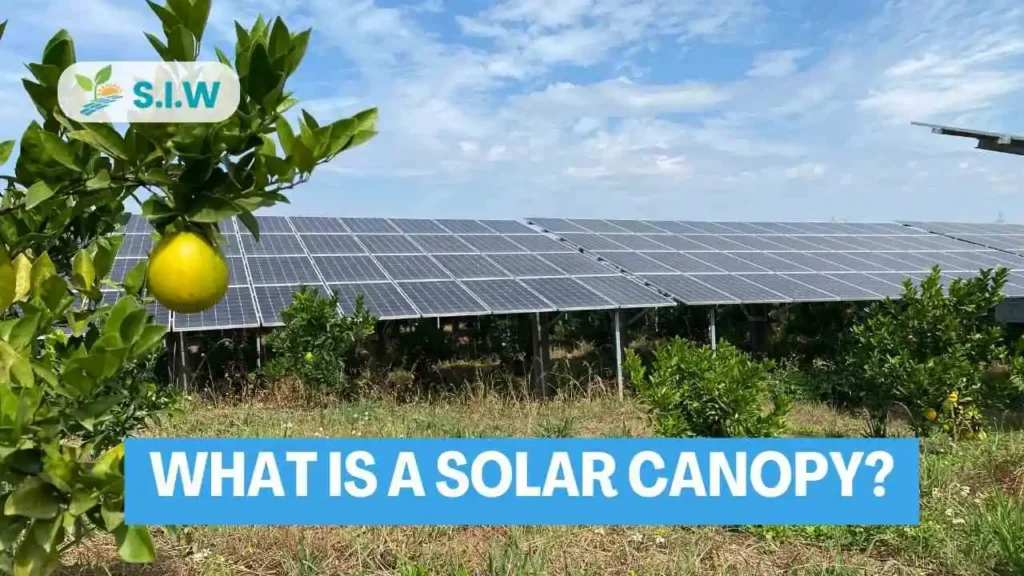In an era where renewable energy and sustainable solutions are increasingly becoming imperative, innovative technologies are constantly being developed to meet the demands of a greener future. One such innovation is the solar canopy, a structure that not only offers shelter but also harnesses commercial solar energy to power homes, businesses, and public infrastructure. This comprehensive exploration delves into what solar canopies are, how they work, their various types and benefits, as well as their challenges and future prospects.
What is a Solar Canopy?
A solar canopy is a structure that integrates photovoltaic (PV) panels into a canopy design, providing both protection and power generation. Unlike traditional solar panels, which are often mounted on rooftops or ground-mounted arrays, solar canopies are elevated structures that can be installed over parking lots, walkways, or outdoor spaces. They are designed to generate electricity while offering shelter from environmental elements like sun, rain, and snow.
The concept combines the functionality of a standard canopy with the technology of solar energy collection, making it a versatile and space-efficient solution. Solar canopies are often used in commercial, residential, and public applications, serving a dual purpose of providing shaded areas and generating clean energy.
How Do Solar Canopies Work?
Solar canopies operate on the same basic principles as traditional solar panels but are adapted to their unique installation environments. Here’s a step-by-step overview of their functionality:
- Photovoltaic Panels: Solar canopies are equipped with photovoltaic panels that convert sunlight into electricity. These panels are typically composed of silicon cells arranged in a grid-like pattern.
- Sunlight Absorption: As sunlight hits the PV panels, it is absorbed by the silicon cells. The energy from the sunlight excites electrons in the silicon, creating an electric current.
- Electricity Generation: The electric current produced by the PV panels is direct current (DC). This DC electricity is then channeled through an inverter, which converts it into alternating current (AC) for use in homes and businesses.
- Power Distribution: The generated AC electricity can be used to power various electrical appliances and systems. Excess electricity can be stored in batteries or fed back into the grid, depending on the system configuration and local regulations.
- Structural Integration: The canopy’s structure supports the solar panels and is designed to withstand environmental stresses while providing shade and protection to the area below.
Types of Solar Canopies
Solar canopies come in various designs and configurations, tailored to different needs and applications. The most common types include:
- Parking Lot Canopies: These are large structures installed over parking lots, providing shade for vehicles while generating solar power systems for home. They are especially beneficial in urban areas where space is limited and can also incorporate EV charging stations.
- Walkway Canopies: Installed over pedestrian walkways or plazas, these canopies offer shade and protection from the elements while generating electricity. They enhance the usability of outdoor spaces in both residential and commercial settings.
- Roof-Top Canopies: These canopies are integrated into rooftop structures, providing additional space for solar panels while maintaining the functionality of the roof.
- Custom Canopies: These are bespoke designs tailored to specific applications, such as agricultural settings or public parks. They can vary greatly in size and shape to meet unique requirements.
Benefits of Solar Canopies
Solar canopies offer numerous advantages, making them an attractive option for both energy production and infrastructure enhancement:
- Dual Functionality: Solar canopies provide shade and protection while simultaneously generating clean energy. This dual functionality maximizes the use of available space and resources.
- Space Efficiency: By utilizing existing structures like parking lots or walkways, solar canopies make efficient use of available space, particularly in urban environments where land is scarce.
- Reduced Heat Island Effect: Solar canopies help mitigate the urban heat island effect by providing shade and reducing the amount of heat absorbed by surfaces like asphalt and concrete.
- Energy Savings: The electricity generated by solar canopies can significantly reduce energy bills for businesses, homeowners, and public institutions. Excess energy can also be sold back to the grid, providing additional financial benefits.
- Environmental Impact: Solar canopies contribute to reducing greenhouse gas emissions by generating renewable energy. They also help decrease reliance on fossil fuels and contribute to a more sustainable energy future.
- Enhanced Safety: By providing shade and protection from the elements, solar canopies enhance safety for pedestrians and vehicles. They can also reduce the risk of overheating and damage to parked vehicles.
- Aesthetic Appeal: Modern solar canopies are designed with aesthetics in mind, offering visually appealing structures that can complement the surrounding environment.
Challenges and Considerations
Despite their many benefits, solar canopies also face several challenges that need to be addressed:
- Initial Cost: The installation of solar canopies involves a significant initial investment, including costs for the canopy structure, photovoltaic panels, and associated infrastructure. However, these costs are often offset by long-term savings on energy bills.
- Maintenance: Regular maintenance is required to ensure the optimal performance of solar canopies. This includes cleaning the panels, inspecting the structure, and addressing any potential issues.
- Weather Conditions: The effectiveness of solar canopies can be affected by weather conditions, such as heavy snowfall or excessive rain. Designing the canopy to handle such conditions is crucial for its durability and performance.
- Structural Load: The additional weight of the photovoltaic panels and associated equipment must be considered when designing the canopy structure. Adequate engineering and construction practices are necessary to ensure stability and safety.
- Regulatory and Zoning Issues: Depending on the location, there may be regulatory and zoning requirements that impact the installation of solar canopies.








